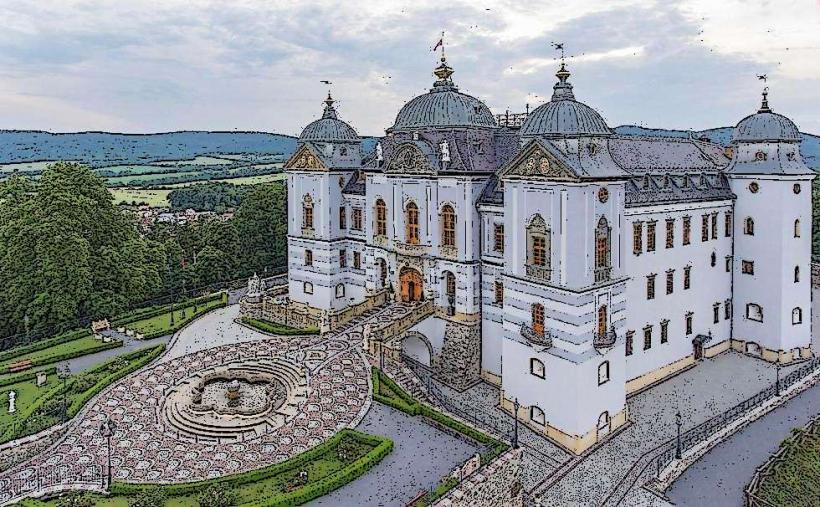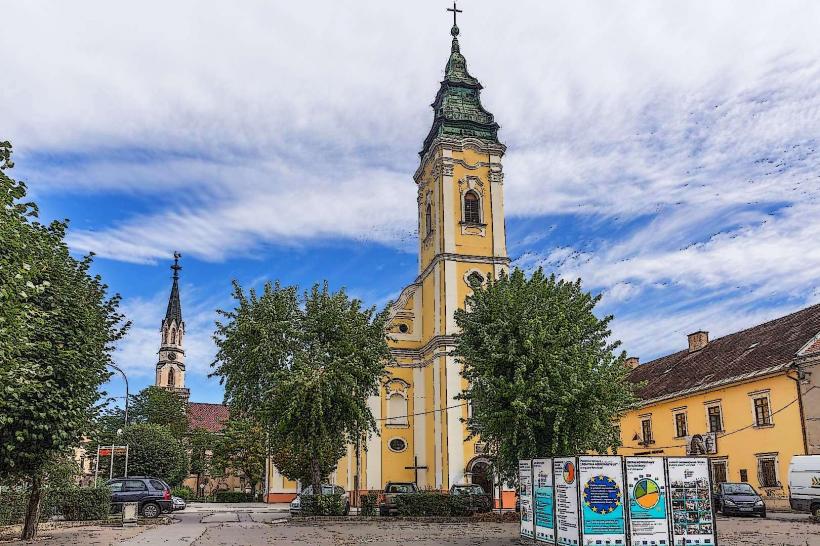Information
City: LucenecCountry: Slovakia
Continent: Europe
Here are the details about Lučenec, a historical city in southern Slovakia, excluding specific landmarks:
General Information:
- Country: Slovakia
- Region: Banská Bystrica Region
- District: Lučenec District (administrative center)
- Population: Approximately 27,000 (as of 2023)
- Area: 47.96 km² (18.52 sq mi)
- Time Zone: Central European Time (CET, UTC +1), Central European Summer Time (CEST, UTC +2)
- Currency: Euro (€)
- Language: Slovak (official)
- Transportation:
- Public Transport: Bus services connect Lučenec to neighboring villages and urban districts.
- Train Station: A stop on regional rail routes, linking it to Zvolen, Košice, and Budapest.
- Road Links: Located on key roads connecting it to Bratislava, Banská Bystrica, and Hungary.
- Nearest Airports: Bratislava Airport and Budapest Airport.
History:
- Early Settlement: Settled in prehistoric times, with evidence of Celtic and Roman presence.
- Medieval Era: First mentioned in the 13th century, developing as a trade and agricultural hub.
- Ottoman Period: Faced invasions and became part of the Ottoman frontier during the 16th century.
- 19th Century: Experienced economic growth, particularly with the expansion of railways and industries.
- Modern Era: Lučenec played a role in the national movements of Slovakia and Hungary, reflecting its multiethnic heritage.
Economy:
- Overview: Lučenec’s economy is based on trade, industry, and agriculture.
- Key Sectors:
- Manufacturing: Includes machinery, textiles, and food processing industries.
- Agriculture: Fertile plains support crop farming and livestock rearing.
- Retail and Services: Shopping centers, markets, and small businesses cater to local and regional needs.
- Tourism: Attracts visitors interested in history, culture, and nearby natural attractions.
Government:
- Status: Administrative center of the Lučenec District.
- Administrative Division: Includes urban districts and surrounding rural areas.
- Mayor: Governed by a mayor and municipal council elected every four years.
Culture:
- Arts and Entertainment: A modest cultural scene reflects Slovak and Hungarian traditions.
- Theater and Performing Arts: Regular performances by local and visiting artists.
- Music: Hosts folk music events and modern concerts.
- Art Exhibitions: Galleries showcase works by regional and Slovak artists.
- Museums: Focus on local history, ethnography, and the city’s Ottoman and Hungarian heritage.
Education:
- Primary and Secondary Schools: A variety of institutions providing education for all levels.
- Higher Education: Vocational schools emphasize technical and agricultural studies.
Architecture:
- Style: A mix of Gothic, Renaissance, and Baroque architecture, alongside modern developments.
- Urban Layout: Compact city center surrounded by residential and industrial areas.
Parks and Recreation:
- Green Spaces:
- City parks provide leisure and relaxation areas for residents and visitors.
- Proximity to natural reserves and forests offers opportunities for hiking and nature exploration.
- Sports: Facilities for football, basketball, and tennis are available.
Demographics:
- Ethnic Composition: Predominantly Slovak, with significant Hungarian and Roma minorities.
- Religion: Roman Catholicism is the primary religion, with Protestant, Orthodox, and Jewish communities.
- Languages: Slovak is the official language, with Hungarian widely spoken due to historical and demographic factors.
Climate:
- Type: Temperate continental climate.
- Summer: Warm, with temperatures ranging from 20°C to 30°C (68°F–86°F).
- Winter: Cold, with occasional snowfall and temperatures below freezing.
Sports:
- Football (Soccer): Home to local football clubs and a community stadium.
- Cycling and Hiking: Popular due to scenic countryside and nearby trails.
- Recreational Activities: Includes swimming and fitness facilities.
International Relations:
- Twin Cities: Lučenec has partnerships with cities like Eger (Hungary), Rakovník (Czech Republic), and Vác (Hungary).
Key Events and Festivals:
- Cultural Festivals: Celebrate Slovak and Hungarian traditions, including folklore, music, and dance.
- Wine and Gastronomy Events: Highlight local culinary and wine-making traditions.
- Historical Commemorations: Events reflecting the city’s Ottoman-era history and Hungarian influences.
- Christmas Market: Offers local crafts, traditional food, and festive activities.
Lučenec is a city that blends historical significance with a vibrant cultural and economic life. Its strategic location, historical legacy, and connection to both Slovak and Hungarian traditions make it an intriguing destination for visitors and a vital center for the region.



